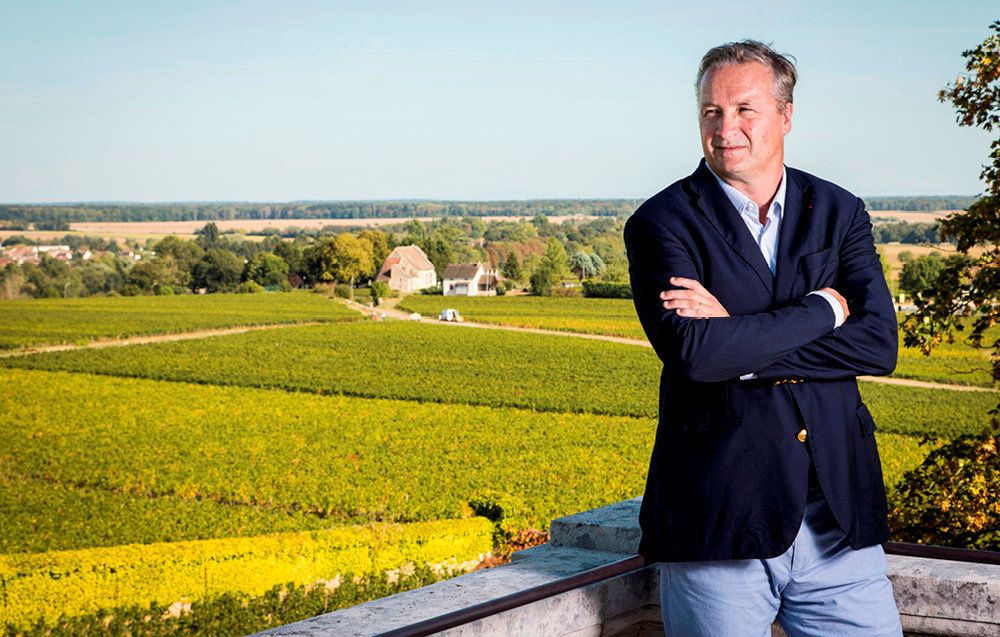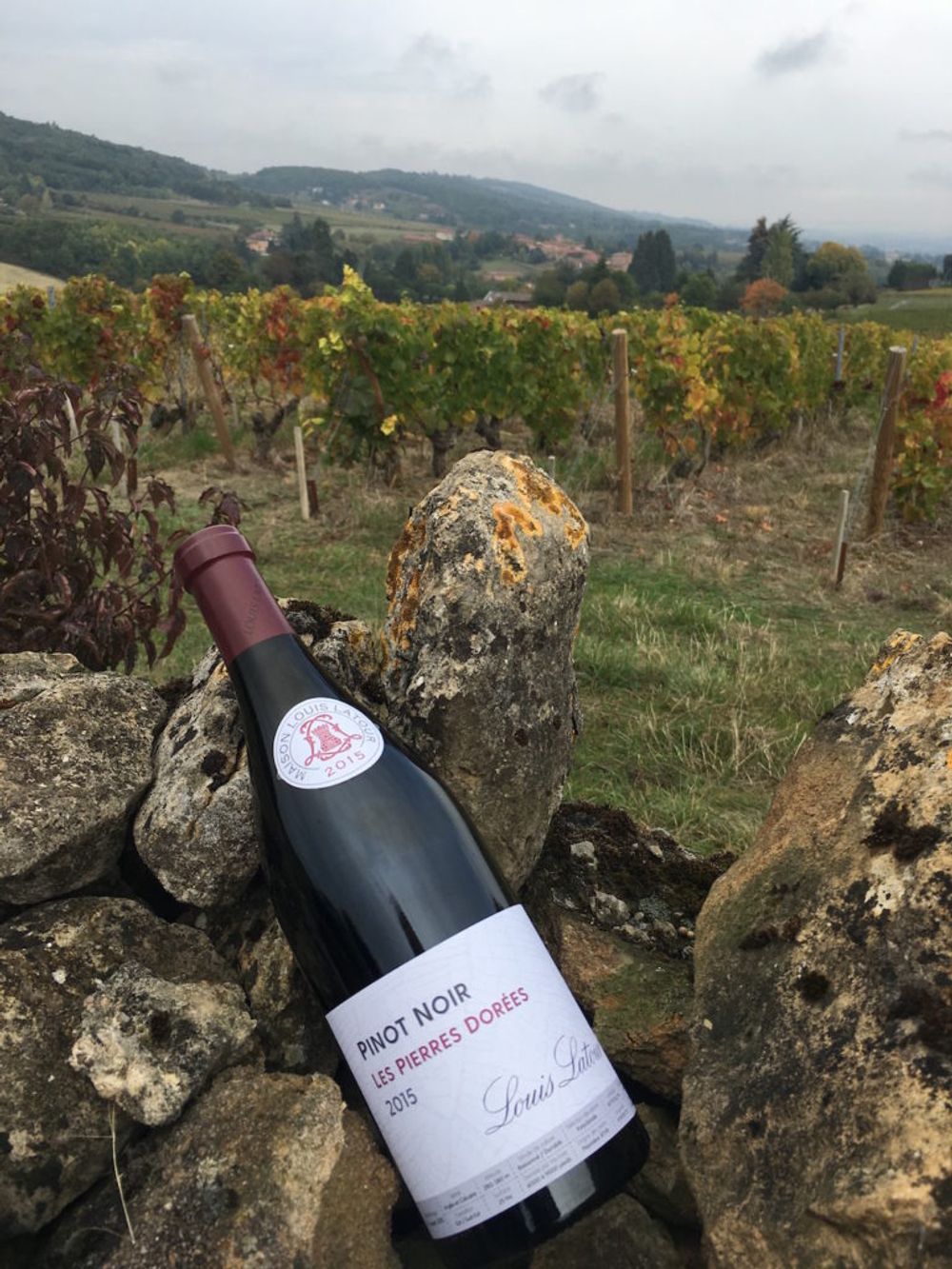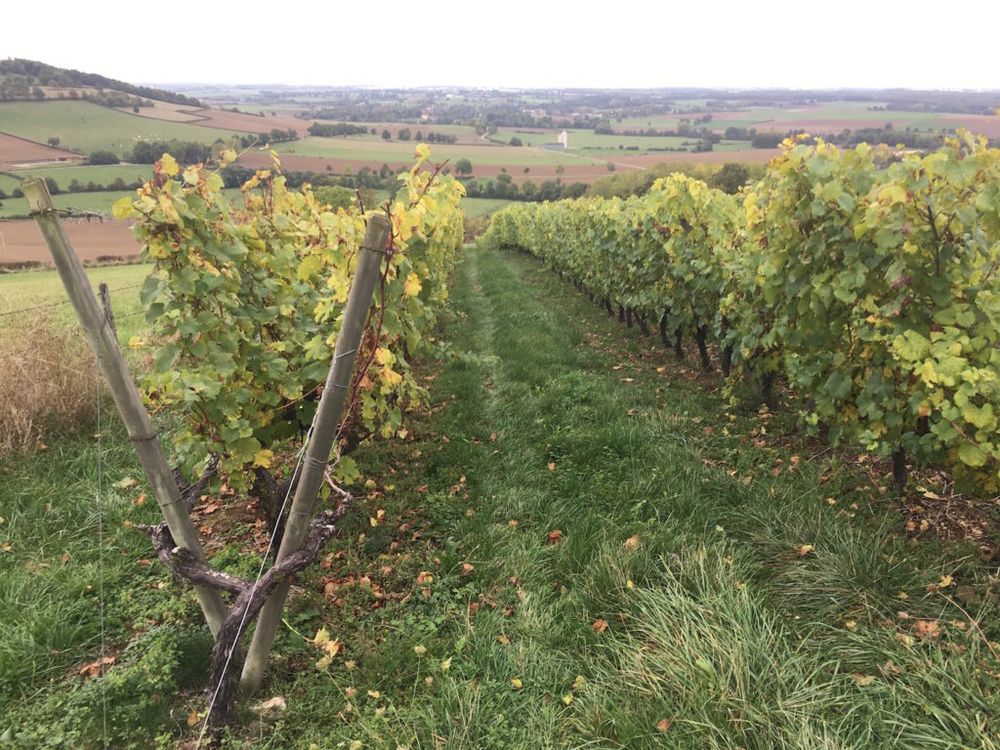Louis-Fabrice Latour says that you can call 2018 a ‘global warming vintage’ but that the learnings over the past ten years have helped Burgundy adapt. “If 2018 happened 10 years ago we would have done the same vintage as 09”.
Louis-Fabrice Latour is remarkably calm and good-humoured given the state of flux he finds himself in. Meeting up in the London offices of Louis Latour Agencies just prior to the UK elections in December, he jokes about the industrial action that played havoc with a train journey to see a customer outside London the day before, imitating the incoherent guard telling customers which stations they were not going to stop at.
“At least when the French strike you know what is going to happen…” he laughs.

“In America with the tariff issue France is only 5% of the market, California can take our seat at the table,” Louis-Fabrice Latour, London, 2019
Uncertainty, though, is the key worry for him both as a wine producer and as a politician – Latour is co-president of Burgundy’s trade body the BIVB, he is vice-president of French Exporters of Wine and Spirit, and the owner of Maison Louis Latour, one of the most important négociants of quality wine in Burgundy and the largest owner of grand cru vineyards in the Côte d’Or. The areas of concern are many: 2019 has seen the lowest crop in Burgundy for almost two decades, prices look set to rise for that vintage by 20-30%, Brexit is about to impact his second largest export market and the USA – his largest market – has hit still French wine with a 25% import tariff.
Exports are key for Maison Louis Latour with 80% of production sold overseas, primarily through its owned agencies in the US and UK – the two markets with the most uncertainty hanging over them. At the time of posting it was still unclear whether or not the USA will increase this tariff to 100%.
“This is what people in downtown Beaune are talking about – not Brexit,” Latour explains. “It started on October 18, and on February 18 we will see if they carry on with still wine or if they switch to another wine category – so there is a lot of uncertainty.”
“So far it is just the beginning because we normally have a bit of stock but you will see the impact more in early 2020 – it creates a lot of tension with our distributors, with our customers. Many big customers might say we won’t promote your wine because we don’t know where we stand with the tariff so why don’t we wait until the thing is over?”
“We start immediately being 25% more expensive, so many of our nice distributors their bottom line is 1-2% it is too much for them to absorb – and it’s something you have to pay up front.”
The tariff as it stands does not affect Italian and most other European wine, Champagne or bulk wine, all of which is unfairly affecting a region like Burgundy, thinks Latour, and threatening it with the loss of added value and employment.
“It disturbs French still wine (still wine from Italy they are not affected) and the major impact mid-term is there is no tariff if you ship wine in bulk to America so this is causing a lot of trouble for the French wine industry. I know that for a lot of our competitors they have decided to ship in bulk – some producers in Mâcon and Beaujolais have started already, so all the added value is going to be in America – we may lose added value and jobs.”
“But we do not know – will it still be ourselves? Will it be Cognac and Champagne? Will it be 10% rather than 25%? Will it be 50%? No one knows. As the Vice President of the French Exporters of Wine and Spirit I have been to see the government, and conducted a press conference. But the worse thing is this uncertainty.”

Louis-Fabrice Latour is the seventh Louis Latour and 11th generation in charge of Maison Louis Latour, taking over the reins two years after the house’s Bicentennial
It is fitting that Louis-Fabrice has an historical perspective on current events – Maison Louis Latour has had to cope with a multitude of challenges back to its inception eight years after the French Revolution.
“For us to ship wines in bulk it reminds us of the past when we used to ship wine in barrel – I’m not a big fan for quality control. Part of my father’s generation was that we do it ourselves and this is one reason why Louis Latour and Louis Jadot have been very successful in the UK because we were the first in the 60s to decide not to ship any more in barrels to the UK, to control all aspects.”

Latour started life out as a cooperage before moving into wine and acquiring vineyards across Burgundy, today it holds the largest area of Grand Cru property in the Cote d’Or.
If US tariffs continue, however, there is more of a threat to French wine from the American wine industry, Latour believes.
“You see you don’t produce a lot of still wine in the UK so we know Burgundy plays a big role, we are not going to be replaced, but in America with the tariff issue France is only 5% of the market, California can take our seat at the table. In the UK we feel more at ease. Maison Latour started shipping wine to England shortly after the Napoleonic war – so when we look at it from an historical point of view we know that there is the friendship and reassurance by our customers – we are not worried mid-term.”
“It’s more a question for you – will you favour Commonwealth wine in terms of duty in a few years time? – I don’t know.”
Latour sees Brexit as far less problematic than US tariffs.
“We are ready for Brexit, we have worked a lot with French customs we know our customers are ready too. We know that the first few weeks are bound to be challenging with a bit of turmoil, waiting at customs, but we have reassurance from both sides that it should work well.”

Latour owns 25 ha of Pinot Noir in Beaujolais, with the wine classed for political reasons as a Côteaux Bourguignon
The merging of Burgundy and Beaujolais
One of the major changes afoot that Latour is certain will happen is that Beaujolais will officially become a part of Burgundy. He reveals that an announcement is imminent from INAO (Institut national de l’origine et de la qualité) that wine can be planted as Burgundy in Beaujolais.
“We have been working on it for a few years and they are going to announce that here if you plant Chardonnay or Pinot it can be called Burgundy so once it’s done we can merge. We are getting closer to it every day.”
The two regions have been working closer since the 1990s with producers in the Côte d’Or investing in Beaujolais, and the two regions’ major winemaking unions merging three years ago. But Latour says that the ties run deeper.
“Beaujolais is part of Burgundy we’ve always made Gamay and we can de-classify Crus Beaujolais into Bourgogne, there are also some historical links, people are the same in terms of mentality, it’s an old established region when it comes to winemaking, the operators are the same – DeBoeuf is very big in Mâconnais for example, there are 1300 ha of Chardonnay planted in Beaujolais so one tenth of Beaujolais is Chardonnay and that is growing every year. We have the lieu dits the slopes… it’s going to happen.”
Latour already owns 25 hectares of Pinot Noir in Les Pierres Dorées, Beaujolais, with the wine classed for political reasons as a Côteaux Bourguignon “We don’t want to upset the growers from the Cote D’Or,” he says. Latour is not investing in any more land at this stage, to see how the wine develops and also to see if they are joined in the area by other producers, wishing as he does that Pinot Noir Pierre Dorées becomes a category of its own.
“Most of the growers from Burgundy were very reluctant to the fact that we merged with Beaujolais because they had no ‘identified’ Burgundy – for them it’s a big thing because they didn’t want to be assimilated with Bourgogne from Beaujolais – but now for the second year they have Bourgogne Côte d’Or and now there is Bourgogne Côte Chalonnaise so at least they have their own thing and when you buy Bourgogne Côte d’Or you know it’s not coming from Beaujolais.”
“For me it doesn’t matter – whether we make a Bourgogne or a Bourgignon in a Maison Latour style – good wine always sells.”

Latour vineyards in Auxerrois using traditional lyres
Putting the spotlight on Burgundy as a whole
One of the main focuses of Bourgogne Week 2020, which starts in the UK tomorrow Jan 7th and runs until the 16th, is emphasising the in-between quality levels officially called ‘Régionales Appellations with a geographic denomination’. These are 14 wines from Bourgogne and 27 from Mâcon which specify the region, village or climat that the Bourgogne or Mâcon wines come from, and sit just below ‘village wines’.
As a powerful négociant, it is important that Latour champions these Mâcon and Bourgogne wines as much as the more auspicious sites, but he believes in an egalitarianism in Burgundy – that everyone should be a part of the success.
“There are some great wines produced all over Burgundy and everyone should be part of the success of Burgundy. So we should support Côte Chalonnaise and Irancy, we don’t want it to be top of the top which is doing great and we forget about the rest, in Burgundy we all have interest everywhere. It makes it more democratic, more human, and like I say it is important to make a great Aloxe- Corton but we are proud to make a great Mâcon – we need to have growers working well, making a good living, being supported by BIVB and all of us. We want all Burgundy to be prosperous and we also want Beaujolais to be part of it.”
Maison Latour’s annual turnover is currently around €70m from nine million bottles – 6m from Latour, 2m from Henry Fessy in Beaujolais and 1m from Simonnet-Febvre in Chablis, both houses acquired under Louis-Fabrice’s tenure. Although half of the family-owned 50 hectares are Grand Cru and account for 20% of the company’s turnover, in terms of volume they account for just a few per cent. “We buy from hundreds of domaines, we buy a lot of Mâcon and Pouilly-Fuissé,” Latour says.
“People often think of Burgundy as being very expensive like Vosne-Romanée but there a lot of nice villages – Pernand-Vergelesses, Savigny, Marsannay – these villages we should talk more about them because they are still reasonable prices, and the English wine trade they know that.”

Some of the ‘big guns’ from Latour’s 2018 vintage
The quality and quantities of 2018 and 2019 harvests
One of the anomalies, and indeed advantages, of Bourgogne Week is that it comes so soon after the Hospices de Beaune charity auction that focuses on a different, more recent vintage. So, Latour is starting to sell in 2018 this week, against the backdrop of what the auction is telling us about the 2019 vintage.
2018 is a massive harvest with impressive, early drinking wines. 2019 is also of good quality but it is the smallest vintage since 2003 with prices (at the auction at least) up 20%.
Latour cites this as another short-term challenge.
“2019 is smaller than 2016 – we had the frost, the rain during the flowering and the severe heat in July. The official figure at Hospices is that 2019 is 1.2m hectolitres and the year before (2018) we were 1.9m but 2018 was a huge crop – the average is more likely to be 1.5m hectolitres.”
For growers in Burgundy it means they can maintain current price levels in 2018 knowing they will rise next year. For UK buyers it indicates that 2018 is a vintage to buy in volume across the board, as Burgundy will be in shorter supply next year and will most likely cost more.
“For 2019 Hospices de Beaune volume was down 30% and prices were up 20%. So the message that we want to convey from the growers is that the increase in price is less than the reduction in volume. We have to also take into account tariffs so we have to be reasonable.”
Latour says that the company’s policy of always having a few years of stock in the cellars means that he can better manage supply and demand in the event of a shortfall, such as 2019, which at least came on the back of the glut of 2018 and not 2016.
“The situation for Burgundy is better because we had a nice crop in 2017 and 2018 so when we faced that smaller crop in 2019 we were back to normal really in terms of stock, it is good 19 didn’t come after 16. There is no risk of shortage – yet, but if we were to have a small crop with 2020 …. But then this is the charm of Burgundy, prices go up they go down, big crop, small crop, different types of vintages, it’s better otherwise our life would be boring,” he laughs.
As a man whose over-riding passion is wine, Latour talks long about the 2018 vintage, one which he confesses he hasn’t come to any over-riding conclusions about, although it is clearly a ‘hot’ vintage and an early drinking year.
Does 2018 remind him of another vintage?
“We have learned a lot from the past 10 years so we have learned to adapt. with 06 and 09 we were caught a bit by surprise and because (with 2018) we knew what was going on – we were looking for acidity, to keep the freshness to keep the leaves on the vine – we have adapted ourselves. If 2018 happened 10 years ago we would have done the same vintage as 09… which by the way I love to drink now.”
“At the end of the day there is a human factor. So yes 18 looks like a global warming vintage – you don’t get the austerity of 16 but then that was a great vintage because it was just 20 hectolitres per hectare,” he explains (the average yield is 40 hectolitres in white and 32-35 hectolitres in red).
“But you need a bit of time with these things – there are some vintages that are over-estimated and some that are under-estimated so we have to be a little humble.”
“And this is what we have always liked with you in England that you love every vintage – you know that in a lesser vintage there is always something good to take into consideration. This is very important for us, the Burgundians, in England every appellation every vintage you are going to listen to it which is why we are confident that after Brexit we will still be around.”
































